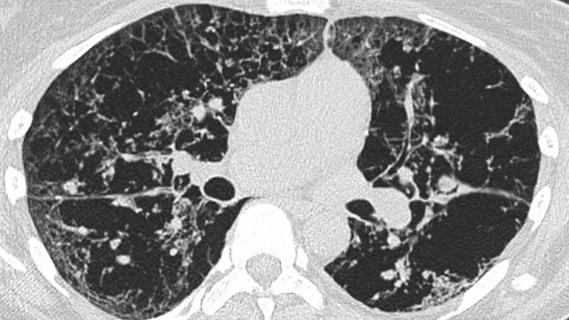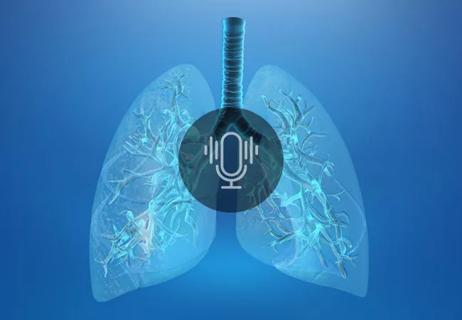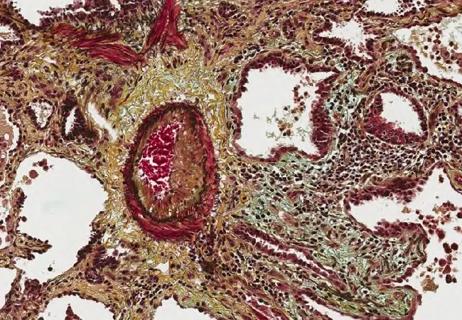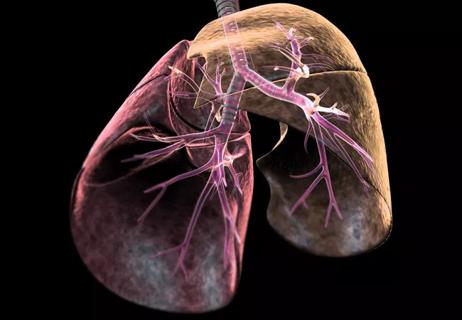An overview of available treatment modalities
![18-PUL-4645-Tolle-Hero-Image-650x450pxl[5]](https://assets.clevelandclinic.org/transform/LargeFeatureImage/d0dfe399-8e94-4a38-a720-258396b54c23/18-PUL-4645-Tolle-Hero-Image-650x450pxl5_jpg)
By Leslie B. Tolle, MD, Brian D. Southern, MD, and Daniel A. Culver, DO
Advertisement
Cleveland Clinic is a non-profit academic medical center. Advertising on our site helps support our mission. We do not endorse non-Cleveland Clinic products or services. Policy
Idiopathic pulmonary fibrosis (IPF) is a devastating and fatal lung disease that generally affects older adults. Primary care physicians are uniquely positioned to encounter patients with IPF, whether because of a patient complaint or as an incidental finding on computed tomography. Here we offer an overview of available treatments; click here for an overview of the disease and here for information on diagnosis.
Antifibrotic therapy is a choice between pirfenidone and nintedanib.
Pirfenidone, which has an undefined molecular target, was approved based on the results of three trials. Pooled analyses from these trials showed a reduction in the decline from baseline in FVC percent predicted and improved progression-free survival. Pooled and meta-analyses of pirfenidone clinical trials have shown a mortality benefit, although no individual study has shown such an effect on mortality rates.
The major adverse effects of pirfenidone are gastrointestinal distress and photosensitivity rash.
Nintedanib is a triple tyrosine kinase inhibitor that broadly targets fibroblast growth factor, vascular endothelial growth factor, and platelet-derived growth factor receptors. Combined analysis of two concurrent trials showed that nintedanib reduced the decline in FVC, similarly to pirfenidone. The major adverse event associated with nintedanib was diarrhea. Since it inhibits vascular endothelial growth factor, there is a risk of hematologic complications such as bleeding or clotting events.
Advertisement
Because pirfenidone and nintedanib can increase aminotransferase levels, regular monitoring is recommended.
To date, no trial has compared pirfenidone and nintedanib in terms of their efficacy and tolerability. Therefore, the choice of agent is based on the patient’s preference after a discussion of potential risks and expected benefits, a review of each drug’s side effects and consideration of comorbid conditions and physician experience.
Patients need to understand that these drugs slow the rate of decline in FVC but have not been shown to improve symptoms or functional status.
Corticosteroids should not be used routinely in the treatment of IPF. Although steroids, alone or in combination with other immunosuppressive medications, were commonly used for IPF in the past, such use was not based on results of randomized controlled trials. Retrospective controlled studies have failed to show that corticosteroids improve mortality rates in IPF; indeed, they have shown that corticosteroids confer substantial morbidity. In addition, a randomized controlled trial combining corticosteroids with N-acetylcysteine and azathioprine was stopped early due to an increased risk of death and hospitalization. Collectively, these data suggest that corticosteroids confer no benefit and are potentially harmful. Their use in IPF is discouraged, and the joint international guidelines recommend against immunosuppression to treat IPF.
The guidelines offer additional suggestions for the management of IPF.
Advertisement
Preliminary evidence suggests that microaspiration associated with abnormal gastroesophageal acid reflux is a risk factor for IPF. As such, there is a weak recommendation for aggressive treatment of reflux disease. However, because evidence suggests that proton-pump inhibitor therapy may be associated with adverse renal or central nervous system effects, this recommendation bears caution. It is hoped that ongoing studies will provide further insight into the role of acid-suppression in the management of IPF.
Further treatment recommendations include best supportive management such as supplemental oxygen, pulmonary rehabilitation and vaccinations.
Prompt referral for lung transplant is imperative. IPF is now the most common indication for lung transplant, and given the poor overall prognosis of advanced IPF, transplant confers a survival benefit in appropriately selected patients.
The unpredictable nature of IPF can manifest in the form of acute exacerbations without an identifiable cause. The loosely defined diagnostic criteria for the diagnosis of acute exacerbations are a previous or new diagnosis of IPF, worsening or development of dyspnea in the last 30 days, and new bilateral ground-glass or consolidative changes with a background of usual interstitial pneumonia (UIP) on high-resolution CT.
A new definition has been proposed to facilitate research in the characterization and treatment of acute exacerbations of IPF. The new definition includes all causes of respiratory deterioration except for heart failure and volume overload. It is less strict about the 30-day time frame. This newer definition is based on the lack of evidence differentiating outcomes when an acute deterioration is associated with known or unknown etiologies.
Advertisement
The incidence of acute exacerbations is variable, with a one- and three-year incidence ranging between 8.6 and 23.9 percent depending on the criteria used. In general, acute exacerbations carry a grim prognosis, with a median life expectancy of 2.2 months.
There is no approved therapy for exacerbations of IPF. Rather, treatment is mainly supportive with supplemental oxygen and mechanical ventilation. Current guidelines have a weak recommendation for the use of corticosteroids, but there are no recommendations regarding dose, route or duration of therapy. Other treatments, primarily immunomodulatory agents, have been suggested but lack evidence of benefit.
Drs. Tolle and Southern are staff in the Respiratory Institute. Dr. Culver is Director of the Interstitial Lung Disease Program.
This abridged article originally appeared in Cleveland Clinic Journal of Medicine.
Advertisement
Advertisement

Treatments can be effective, but timely diagnosis is key

A Cleveland Clinic pulmonologist highlights several factors to be aware of when treating patients

As median survival increases among patients with CF, clinicians must now be aware of previously uncommon comorbidities emerging as this patient population ages

Emerging trends are transforming the classification, diagnosis, therapies and management of ILD

May allow greater independence and quality of life

Multidisciplinary approach can uncover unsuspected diagnoses

New pathways to consider in the treatment of SSc-ILD

An interview with Daniel Culver, DO